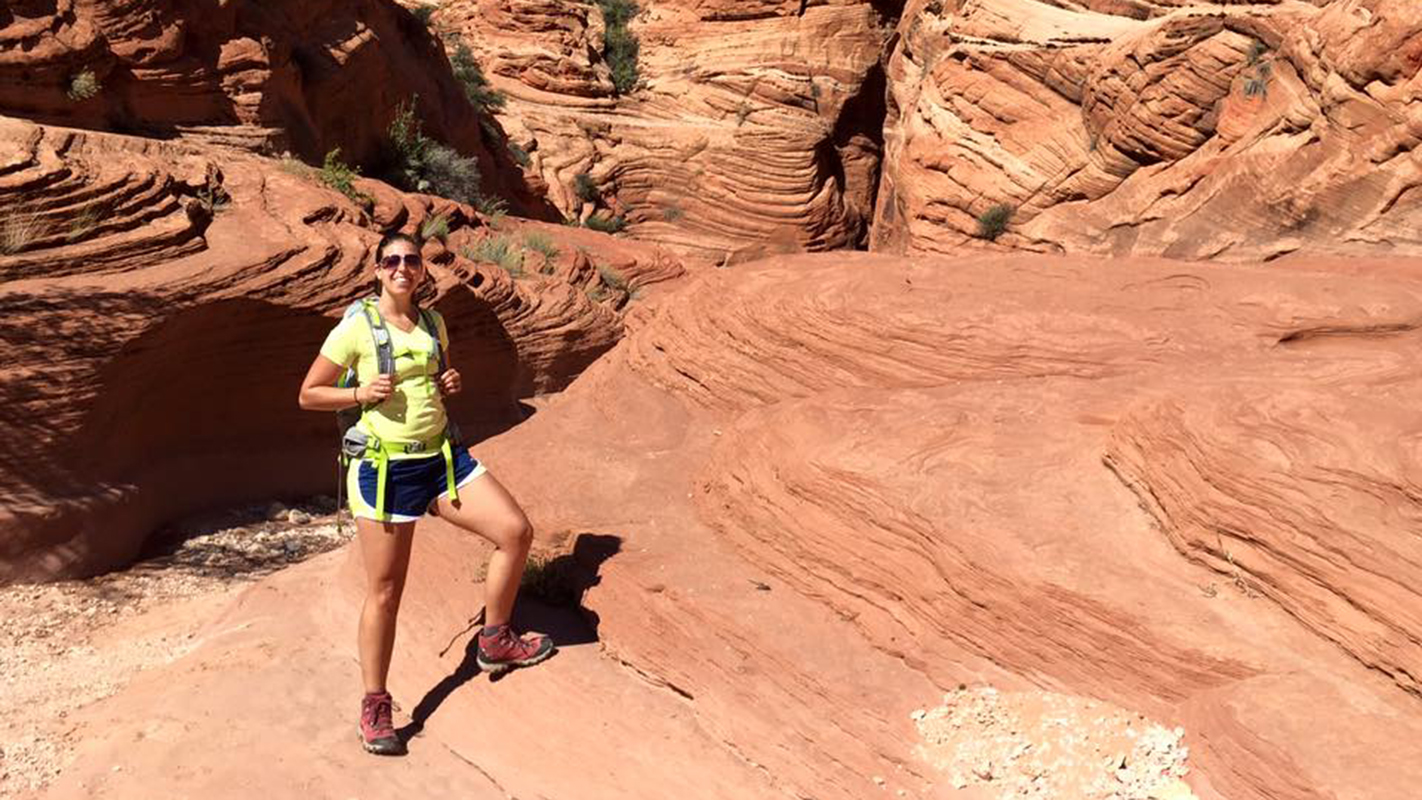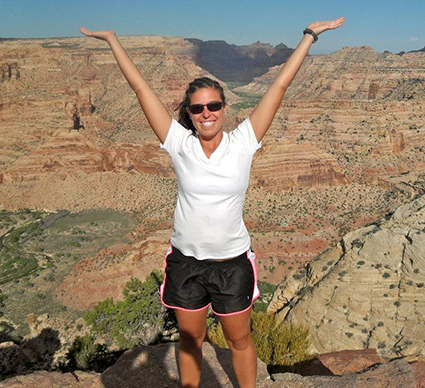This Is What Science Looks Like at NC State: Rachel Atkins

Editor’s Note: This post was written by Rachel Atkins, a marine, earth and atmospheric sciences graduate student at NC State and a 2015 Global Change Fellow. The post is an entry in an ongoing series that we hope will highlight the diversity of researchers in science, technology, engineering and mathematics.
I am a second year master’s student in Dr. Karen McNeal’s Geocognition and Geoscience Education Research Lab in the department of Marine, Earth and Atmospheric Sciences at NC State. My research involves understanding the dynamics of climate change communication as well as instructional practices in the college classroom.

My current project aims to understand how non-experts navigate graphical representations of climate change data using a technique called eye-tracking. The aggregate data from non-experts is then compared to how experts navigate the graphs to determine differences between the two.
Eye-tracking is a method we use to determine where a person is looking, when, and for how long. The eye-tracker is a device that we attach to a computer that tracks the path that an individual’s eyes take while navigating the screen.
The implications of this research are far-reaching. Many members of the public simply do not “believe” in climate change. This “disbelief,” in many cases, can be traced back to a lack of understanding of the science behind climate change. Therefore, there is a clear disconnect between the way climate scientists are presenting information about climate change and the way the public is interpreting it. If we can understand how their navigations and interpretations differ, we can inform the public more effectively.
Outside of the lab, I enjoy being outside as much as possible! During my years as an undergraduate geology major, I was able to take trips to many geologically interesting places including Brice, Zion and the Grand Canyon; the Grand Tetons and Puerto Rico.
I also have played sports all my life and continued in college. I even had the opportunity to play field hockey in Argentina with their Olympic coach! Being a grad student in geology has allowed me to continue my outdoor adventures by traveling to California, Colorado and Utah for conferences and research.
While the challenges of being a graduate student can be many, I love the challenge and am enjoying the ride.
- Categories:


